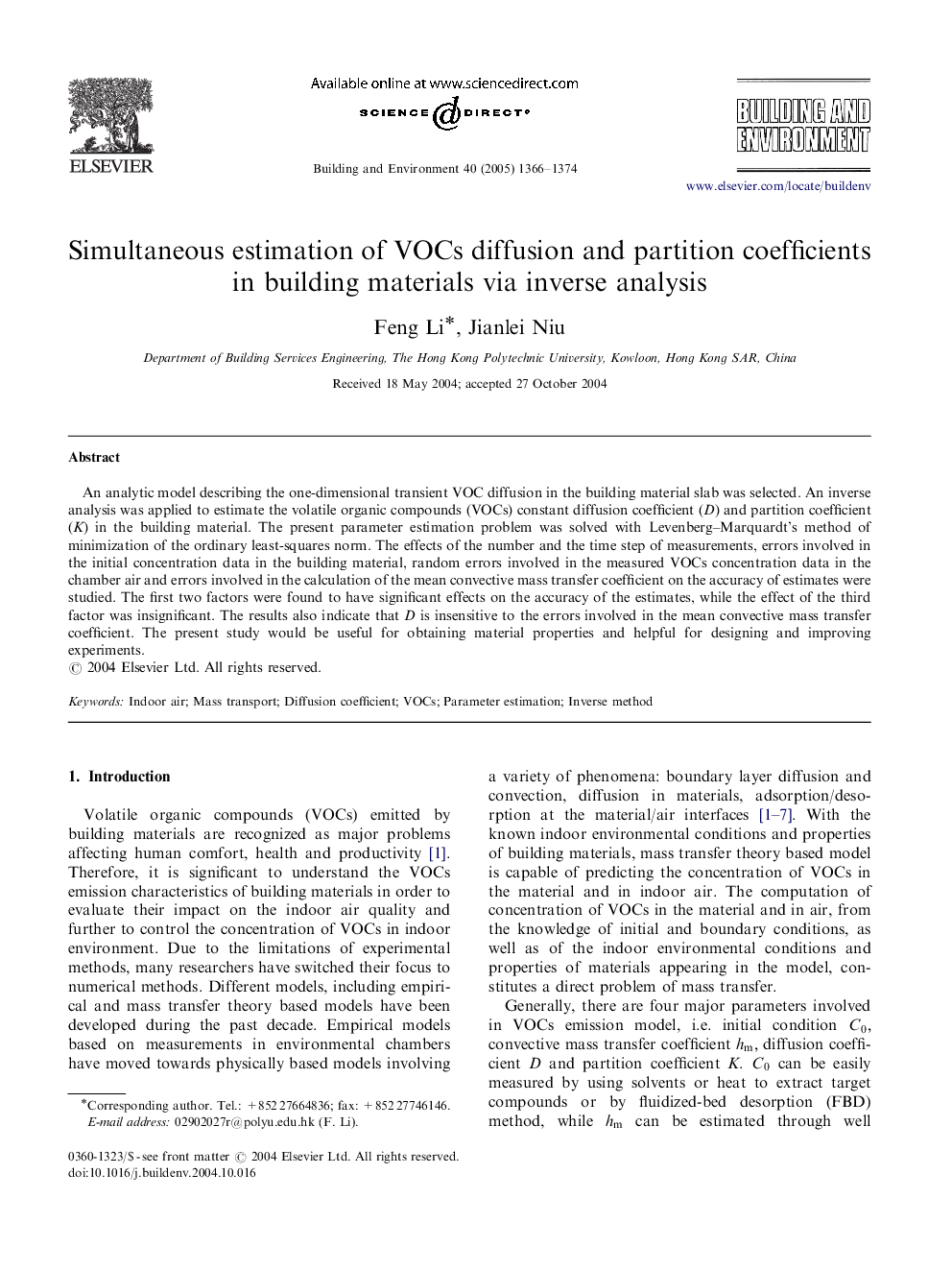| Article ID | Journal | Published Year | Pages | File Type |
|---|---|---|---|---|
| 10282841 | Building and Environment | 2005 | 9 Pages |
Abstract
An analytic model describing the one-dimensional transient VOC diffusion in the building material slab was selected. An inverse analysis was applied to estimate the volatile organic compounds (VOCs) constant diffusion coefficient (D) and partition coefficient (K) in the building material. The present parameter estimation problem was solved with Levenberg-Marquardt's method of minimization of the ordinary least-squares norm. The effects of the number and the time step of measurements, errors involved in the initial concentration data in the building material, random errors involved in the measured VOCs concentration data in the chamber air and errors involved in the calculation of the mean convective mass transfer coefficient on the accuracy of estimates were studied. The first two factors were found to have significant effects on the accuracy of the estimates, while the effect of the third factor was insignificant. The results also indicate that D is insensitive to the errors involved in the mean convective mass transfer coefficient. The present study would be useful for obtaining material properties and helpful for designing and improving experiments.
Related Topics
Physical Sciences and Engineering
Energy
Renewable Energy, Sustainability and the Environment
Authors
Feng Li, Jianlei Niu,
